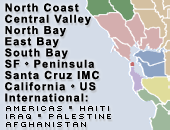Decades Later, the U.S. Government Called Hiroshima and Nagasaki ‘Nuclear Tests’
So, 35 years after the atomic bombings of those Japanese cities in August 1945, the Energy Department -- the agency in charge of nuclear weaponry -- was categorizing them as “tests.”
Later on, the classification changed, apparently in an effort to avert a potential P.R. problem. By 1994, a new edition of the same document explained that the bombings of Hiroshima and Nagasaki “were not ‘tests’ in the sense that they were conducted to prove that the weapon would work as designed . . . or to advance weapon design, to determine weapons effects, or to verify weapon safety.”
But the atomic bombings of Hiroshima and Nagasaki actually were tests, in more ways than one.
Take it from the Manhattan Project’s director, Gen. Leslie Groves, who recalled : “To enable us to assess accurately the effects of the bomb, the targets should not have been previously damaged by air raids. It was also desirable that the first target be of such size that the damage would be confined within it, so that we could more definitely determine the power of the bomb.”
A physicist with the Manhattan Project, David H. Frisch,
remembered
that U.S. military strategists were eager “to use the bomb first where its
effects would not only be politically effective but also technically
measurable.”
For good measure, after the
Trinity
bomb test
in the New Mexico desert used plutonium as its fission source on July 16,
1945, in early August the military was able to test both a uranium-fueled
bomb on Hiroshima and a second plutonium bomb on Nagasaki to gauge their
effects on big cities.
Public discussion of the nuclear era began when President Harry Truman
issued a statement that
announced
the atomic bombing of Hiroshima -- which he described only as “an important
Japanese Army base.” It was a flagrant lie. A leading researcher of the
atomic bombings of Japan, journalist Greg Mitchell, has
pointed out
: “Hiroshima was not an ‘army base’ but a city of 350,000. It did contain
one important military headquarters, but the bomb had been aimed at the
very center of a city -- and far from its industrial area.”
Mitchell added: “Perhaps 10,000 military personnel lost their lives in the
bomb but the vast majority of the 125,000 dead in Hiroshima would be women
and children.” Three days later, when an atomic bomb fell on Nagasaki, “it
was officially described as a ‘naval base’ yet less than 200 of the 90,000
dead were military personnel.”
Since then, presidents have routinely offered rhetorical camouflage for
reckless nuclear policies, rolling the dice for global catastrophe. In
recent years, the most insidious lies from leaders in Washington have come
with silence -- refusing to acknowledge, let alone address with genuine
diplomacy, the worsening dangers of nuclear war. Those dangers have pushed
the hands of the
Doomsday Clock
from the Bulletin of the Atomic Scientists to an unprecedented mere 90
seconds to cataclysmic Midnight.
The ruthless Russian invasion of Ukraine in February 2022 quickly escalated
the chances of nuclear war. President Biden’s response was to pretend
otherwise, beginning with his State of the Union address that came just
days after the invasion; the long speech did not include a single word
about nuclear weapons, the risks of nuclear war or any other such concern.
Today, in some elite circles of Russia and the United States, normalized
talk of using “tactical” nuclear weapons has upped the madness ante. It can
be shocking to read
wildly irresponsible comments
coming from top Russian officials about perhaps using nuclear weaponry in
the Ukraine war. We might forget that they are giving voice to Russia’s
strategic doctrine that is basically the same as
ongoing U.S. strategic doctrine
-- avowedly retaining the option of first use of nuclear weapons if losing
too much ground in a military conflict.
Daniel Ellsberg wrote near the close of his vital book
The Doomsday Machine
: “What is missing -- what is foregone -- in the typical discussion and
analysis of historical or current nuclear policies is the recognition that
what is being discussed is dizzyingly insane and immoral: in its
almost-incalculable and inconceivable destructiveness and deliberate
murderousness, its disproportionality of risked and planned destructiveness
to either declared or unacknowledged objectives, the infeasibility of its
secretly pursued aims (damage limitation to the United States and allies,
“victory” in two-sided nuclear war), its criminality (to a degree that
explodes ordinary visions of law, justice, crime), its lack of wisdom or
compassion, its sinfulness and evil.”
Dan dedicated the book “to those who struggle for a human future.”
A similar message came from Albert Einstein in 1947 when he
wrote
about “the release of atomic energy,” warning against “the outmoded concept
of narrow nationalisms” and declaring: “For there is no secret and there is
no defense; there is no possibility of control except through the aroused
understanding and insistence of the peoples of the world.”
__________________________________
Norman Solomon is the national director of RootsAction.org and executive
director of the Institute for Public Accuracy. He is the author of a dozen
books including War Made Easy. His latest book,
War Made Invisible: How America Hides the Human Toll of Its
Military Machine
, was published in June 2023 by The New Press.
Get Involved
If you'd like to help with maintaining or developing the website, contact us.
Publish
Publish your stories and upcoming events on Indybay.


